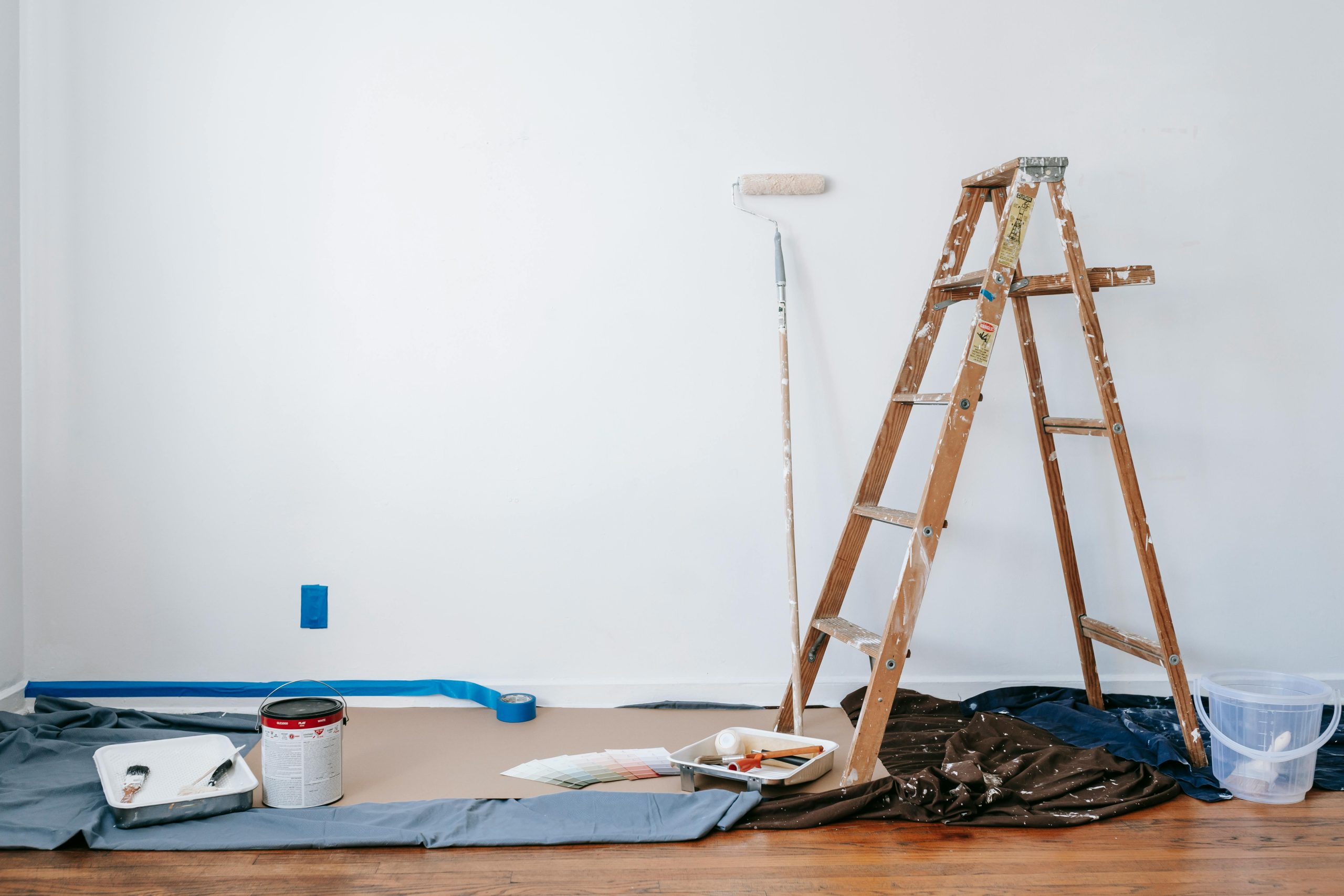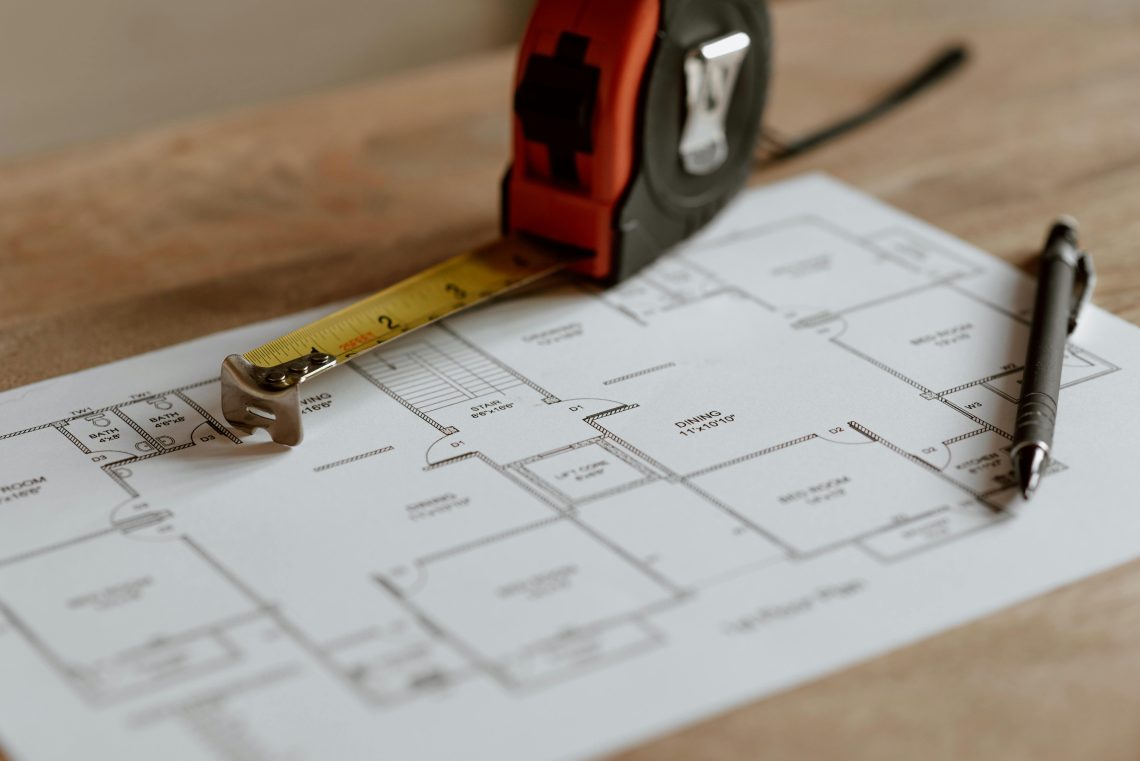- Understand the difference – Remodels change structure or layout, while renovations update or restore existing spaces. Knowing the distinction helps guide budgeting and planning.
- Impact on home value varies – Remodels generally offer higher ROI due to expanded space and improved functionality, while renovations improve aesthetics and livability at a lower cost.
- Prioritize high-ROI improvements – Kitchens, bathrooms, exterior updates, and energy-efficient upgrades often provide the biggest boost to resale value.
- Budget realistically – Remodels are more expensive and time-consuming; renovations are quicker and less costly. Always include contingencies for unexpected expenses.
- Plan carefully – Clear goals, contractor selection, and timelines are crucial for success. A well-planned project avoids costly mistakes and delays.
- Room-by-room approach matters – Some spaces, like kitchens, bathrooms, and living areas, benefit more from remodels, while cosmetic updates work well in other areas.
- Avoid common pitfalls – Don’t over-improve for the neighborhood, underestimate costs, or ignore permits and codes, as these can reduce ROI or cause delays.
If you’re a homeowner looking to boost your property’s value, you’ve probably asked yourself this question: should I remodel or renovate? While the terms are often used interchangeably, they have different meanings, costs, and impacts on your home’s resale value. Understanding the distinction can help you make smarter decisions that maximize ROI and avoid unnecessary expenses. In this guide, we’ll break down everything you need to know about remodels vs renovations, including which projects tend to increase home value the most.
What’s the Difference Between a Remodel and a Renovation?
Many homeowners think remodel and renovation mean the same thing, but there are key differences.
- Renovation typically involves restoring or updating a home to its original condition. This could be fixing outdated fixtures, replacing worn flooring, or refreshing paint and trim. Renovations improve function and appearance but usually stay within the existing layout.
- Remodel goes a step further by changing the structure, layout, or function of a space. Examples include knocking down walls to open a kitchen, adding a bathroom, or converting a basement into a home office. Remodels are more extensive and often costlier, but they can also deliver a bigger impact on home value.
Understanding these differences is crucial because the type of project you choose can affect both your budget and the ROI.
How Do Remodels and Renovations Affect Home Value?

Not every home improvement adds the same value to your property. Some changes look great but offer minimal ROI, while others might drastically boost your resale potential. Here’s a general breakdown:
Renovations often increase value modestly but make your home more appealing and livable. Examples include:
- Updating kitchen appliances
- Installing new flooring or carpet
- Painting walls in neutral tones
- Fixing leaks or replacing roofing
Remodels can have a larger impact because they improve functionality and modernize your home’s layout. Examples include:
- Opening up a cramped kitchen
- Adding a bathroom or bedroom
- Converting an attic into a living space
- Expanding square footage with an addition
In most cases, remodels are more likely to result in a noticeable increase in home value, but they also come with higher costs and longer timelines.
What Home Improvements Offer the Biggest ROI?
When evaluating remodel vs renovation, it’s important to consider home renovations with the biggest ROI. Homeowners often focus on updates that are both functional and appealing to buyers. Some of the top value-boosting projects include:
- Kitchen upgrades: Modern appliances, countertops, and cabinets
- Bathroom remodels: Spa-like features, updated vanities, and energy-efficient fixtures
- Exterior improvements: Landscaping, fresh paint, and new siding
- Energy-efficient upgrades: Solar panels, new windows, and insulation
- Home additions: Extra bedrooms or bathrooms that increase square footage
It’s also worth noting that small cosmetic changes can sometimes provide excellent ROI if they enhance curb appeal or modernize your home.
How Much Should You Budget for a Remodel vs a Renovation?
Budgeting is one of the biggest considerations when deciding between a remodel and a renovation. Renovations are generally less expensive since they don’t involve major structural changes, while remodels can quickly become costly due to labor, materials, and permits.
- Renovation Costs: Typically range from $10,000 to $50,000 depending on the scope. Simple updates like painting or replacing flooring are at the lower end, while bathroom and kitchen updates can reach the higher end.
- Remodel Costs: Can range from $50,000 to $200,000 or more. Projects like kitchen expansions, bathroom additions, or converting attics/basements require skilled labor and sometimes structural adjustments.
It’s a good idea to get multiple estimates and factor in a contingency for unexpected costs when building a project budget.
When Is a Remodel Worth It Over a Renovation?
A remodel is often worth the investment if your goal is to significantly increase home value, improve functionality, or completely modernize your living space. While remodels are generally more expensive and time-consuming, they can transform your home in ways that renovations cannot. Consider a remodel when:
- Your layout is outdated or inefficient – If your kitchen, bathroom, or living area feels cramped or awkward, a remodel can open up space, improve flow, and make your home feel modern and functional. Small tweaks, like knocking down walls or reconfiguring rooms, can make a big difference in livability and appeal.
- You need more living space – Families often outgrow their homes, and remodels allow you to expand existing rooms, add storage solutions, or even convert basements and attics into usable spaces that increase both comfort and property value.
- You want to appeal to a higher-end buyer – If your home is in a market with affluent buyers, a remodel can help it compete with more modern properties. High-quality finishes, smart layouts, and custom design elements attract buyers willing to pay a premium.
- You’re planning a full home renovation and want to modernize the overall design – Sometimes, a renovation alone won’t achieve the level of transformation you want. Integrating a remodel into your plans ensures the home feels cohesive, contemporary, and ready for resale.
While remodels require more upfront investment, the payoff can be substantial, particularly in competitive neighborhoods where buyers are looking for move-in-ready, stylish, and functional homes.
When Should You Stick to Renovations?
Renovations are ideal for homeowners who want to refresh or repair their home without making major structural changes. They are typically quicker, more affordable, and less disruptive than remodels. Consider renovations when:
- Preparing your home for sale without spending too much – Simple updates like painting walls, replacing flooring, or upgrading appliances can make your home more attractive to buyers without the high cost of structural changes.
- Updating wear-and-tear elements – Renovations are perfect for replacing aging fixtures, worn carpet, or outdated countertops. These improvements maintain the home’s condition and can prevent depreciation.
- Maintaining a home to prevent larger problems – Addressing minor issues like leaks, roof damage, or outdated electrical systems through renovation can save money in the long run and keep your home in top shape.
- Refreshing older features while staying within budget – Cosmetic updates like new lighting, cabinet hardware, or landscaping improvements are cost-effective ways to modernize a home without the expense of a full remodel.
Renovations offer a faster turnaround and can still provide a decent ROI, especially when targeting cosmetic or functional improvements that buyers notice immediately.
How to Evaluate ROI Before Starting a Project
Before committing to a remodel or renovation, evaluating potential return on investment is essential. Consider:
- Will this project appeal to future buyers? – Focus on updates that enhance usability and aesthetics. Projects like modern kitchens or added bathrooms often have a higher impact than niche or highly personalized improvements.
- How much value does this improvement add compared to the cost? – Be realistic. Some high-cost remodels may not recoup their full expense, so balance beauty with practicality.
- Does this upgrade address functionality or structural issues? – Fixing critical issues like plumbing, roofing, or insulation can increase value while preventing future maintenance headaches.
- How long will the project take to complete? – Time impacts both your lifestyle and potential market timing. Longer projects may disrupt daily life or delay resale.
Weighing these factors ensures you make smart choices that maximize both enjoyment and resale value.
How to Prioritize Home Improvements

If your goal is to maximize resale value, prioritize projects with the best potential ROI first. A suggested order:
- Exterior updates – Curb appeal is the first impression. Fresh paint, landscaping, and front doors can dramatically improve marketability.
- Kitchens and bathrooms – Buyers pay attention to these high-impact areas. Updates can range from minor renovations to full remodels depending on budget and goals.
- Energy efficiency upgrades – Modern buyers value sustainability. New windows, insulation, and energy-efficient appliances can boost both comfort and resale appeal.
- High-end remodels – Only pursue these if your budget allows and they align with neighborhood expectations. Luxury upgrades should add measurable value rather than just personal flair.
Even small improvements, like updated lighting or refreshed flooring, can enhance perceived value and attract buyers.
Remodeling or Renovating? Room-by-Room Considerations
Different areas of the home respond differently to remodels vs renovations:
- Kitchen – Remodels often provide higher value due to layout changes and modern finishes. Renovations, such as new cabinets, countertops, or appliances, still yield a good ROI but may be less transformative.
- Bathrooms – Simple renovations can refresh the space, but remodeling—like adding a master bathroom or expanding existing square footage—usually offers greater returns.
- Living Spaces – Converting basements or attics into functional areas like offices, gyms, or guest rooms is considered a remodel that can significantly enhance value.
- Exterior & Landscaping – Renovations like painting, small landscaping projects, or minor curb appeal improvements improve aesthetics. Remodels, such as additions or extensions, increase total square footage and functional living space, impacting ROI more heavily.
Planning Your Project
A successful home improvement project begins with thoughtful planning. Key steps include:
- Setting a budget with a contingency for unexpected issues – Always account for unforeseen problems or material price changes.
- Determining whether a remodel or renovation aligns with your goals – Understand whether your priority is aesthetics, functionality, or value increase.
- Hiring qualified contractors and checking references – Skilled professionals can save money and prevent costly mistakes.
- Factoring in timelines and potential disruptions – Plan for project length and daily life interruptions, especially for larger remodels.
For extensive upgrades, like major kitchen remodels or whole-home transformations, planning a full home renovation ensures you account for costs, permits, and cohesive design execution.
Home Additions: When Bigger Is Better
Sometimes a simple renovation isn’t enough, and increasing square footage is the key to boosting value. Planning a home addition project, such as a new bedroom, bathroom, or sunroom, can provide one of the largest returns on investment. While this type of remodel requires careful design, permits, and higher budgets, the added functional space and improved layout often appeal to buyers more than minor cosmetic updates.
High-End Renovations: Are They Worth the Investment?
High-end remodels and renovations are not for every homeowner, but in the right market, they can significantly increase home value. Planning a high end renovation may include:
- Custom kitchen cabinetry and high-performance appliances – Perfect for creating a chef-ready space.
- Spa-like bathrooms with premium fixtures – Luxury touches elevate perceived value.
- Designer flooring or finishes throughout the home – Unique materials can impress buyers.
- Smart home technology integration – Energy-efficient and automation upgrades attract modern buyers.
These upgrades can make your home stand out in competitive neighborhoods, but they come with higher upfront costs. Always consider neighborhood standards and potential ROI before investing.
Common Pitfalls to Avoid
Whether remodeling or renovating, homeowners often encounter issues that reduce ROI:
- Over-improving beyond neighborhood standards – High-end features may not pay off if neighboring homes don’t match the level of luxury.
- Poor contractor selection – Unreliable contractors can lead to delays, errors, or subpar finishes.
- Underestimating costs and timelines – Always budget for surprises, as even small unexpected expenses add up.
- Ignoring permits and local codes – Violations can create legal issues and affect resale.
- Choosing highly personalized designs – While tailored features can be enjoyable, they may not appeal to a broad buyer base.
Careful research, planning, and realistic expectations help you avoid these common mistakes.
How to Choose Between a Remodel and a Renovation
To determine the best path for your home, consider:
- Budget – Renovations are generally cheaper, remodels more expensive.
- Time – Renovations are quicker; remodels take longer and may disrupt daily life.
- Impact on value – Remodels often provide a higher ROI, especially for layout changes or additional square footage.
- Your goals – Are you improving aesthetics, functionality, or both?
- Neighborhood expectations – Ensure upgrades align with comparable homes in your area.
Answering these questions honestly will guide you toward the right decision and help you plan a project that balances cost, lifestyle impact, and value increase.
In Closing
Deciding between a remodel and a renovation ultimately comes down to your goals, budget, and desired impact on home value. Renovations are great for refreshing and maintaining your home, while remodels offer the opportunity to significantly increase square footage, functionality, and resale appeal. By evaluating potential ROI, prioritizing the right projects, and planning carefully—including home additions or high-end upgrades when appropriate—you can make improvements that truly add value.




